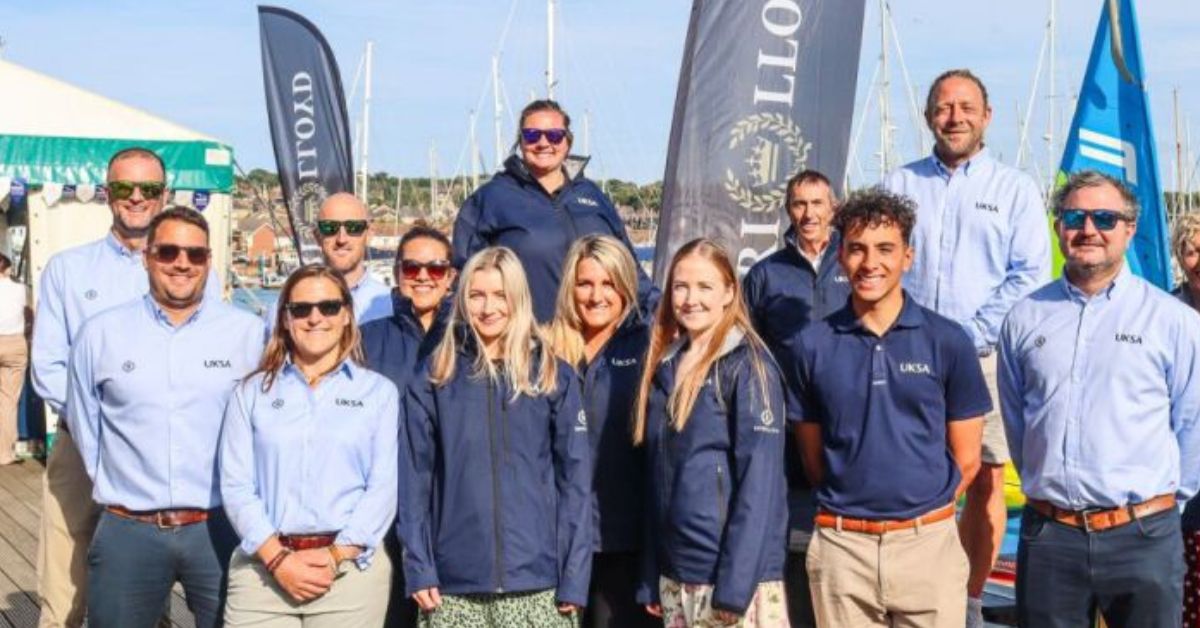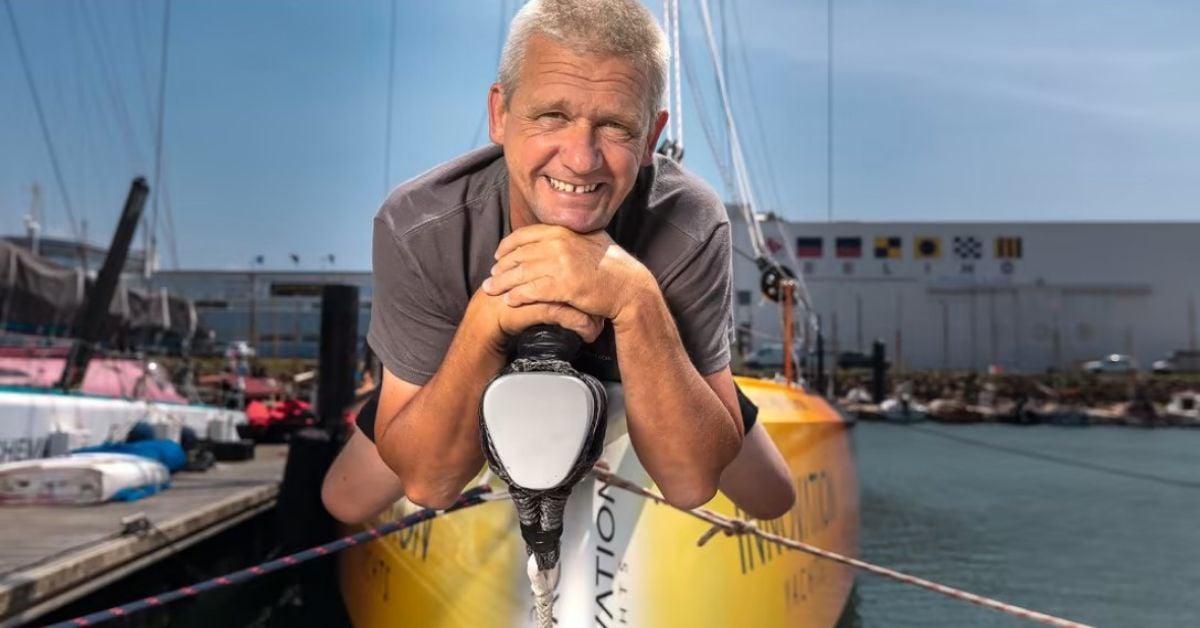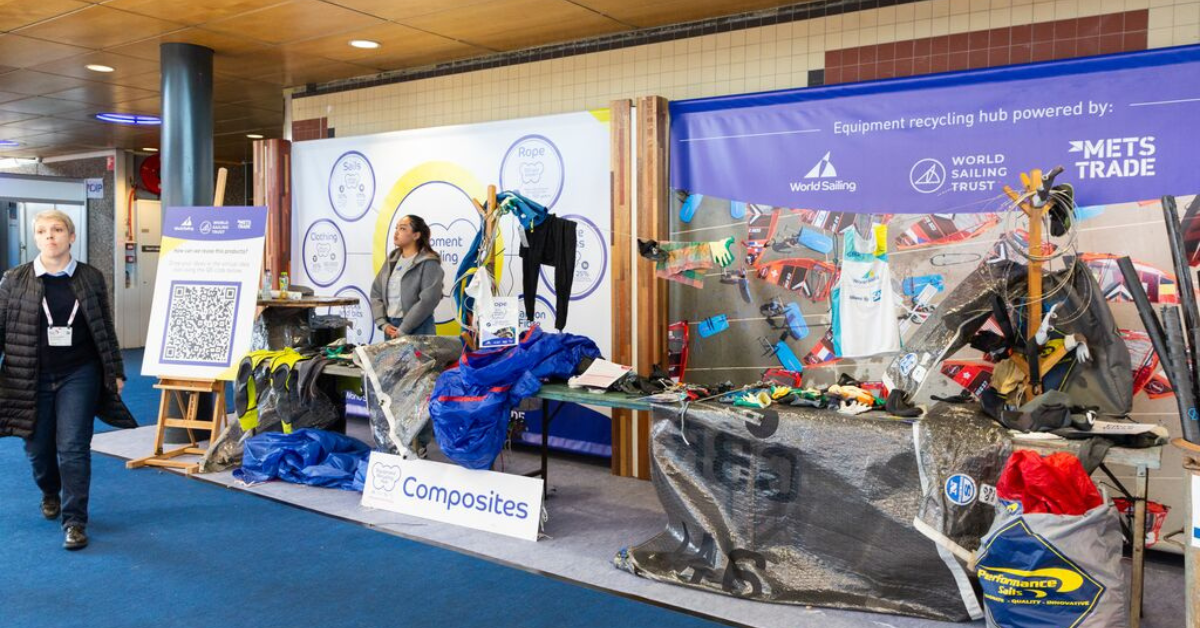
Getting an upcycling supply chain running is the challenge that sports associations and recycling start-ups are facing in the sport of sailing. A lot of high-end sailing gear is produced with fossil oil based composites. Technologies to separate the bonded materials after use and prepare them for re-use are emerging. Sailcloth, clothing or used blocks and ropes – a lot of materials are still challenging to recycle.
Penhaul brothers revolutionize sail recycling with Extricko method
The brothers Joe Penhaul-Smith and Sam Penhaul create new sails and textiles from old yacht sail cloth. Joe is a scientist specialising in biotechnology and green chemistry, while Sam is a professional sailor and boat builder.
The brothers have seen the amount of sail cloth being dumped as landfill, causing environmental pollution. They calculated that for sailing, including leisure sailing, sail racing and the emerging sector of sail propulsion for transport, 13 million square meters of sail cloth is produced every year. That is 2000 tonnes of material. Only 0.1 percent of sail cloth is re-used as bags or jackets.
The Penhaul brothers have developed a clean method to treat end-of-life sails and retrieve the components they were made of: mostly fibres and resins. These materials, they use to create new cloth: textiles for clothing and for new sails. The method for recycling as well as the products made through this method, is named Extricko. Joe describes the upcycling method as a “breakthrough in green chemistry that recycles every sail component with zero waste. We've proven it works and believe it should be the new industry standard. Our goal is to expand this technology across the outdoor world.”
Steam decomposing technology powering sustainable sail upcycling
The method that Sustainable Sailing developed uses pressolysis as a leading principle, applying superheated steam. The Extricko method can be used to recycle 99,9 percent of yacht and ship sails: dacron, mylar, carbon and other sails alike. The brothers founded their company Sustainable Sailing three years ago and are now scaling up. In their first year, Sustainable Sailing collected and upcycled about 100 kg. of sails, the second year it was 800 kg., this year they hope to exceed 2000 kgs.
Challenges of scaling up sail recycling and securing feedstock
Getting a constant supply of end-of-life sails is the next challenge in the upscaling of Sustainable Sailing. The company from Melbourne in the English Midlands has a sails recycling service, offering collection bins or containers to yacht clubs to dispose their old sails and collecting services for professional sail racing teams.
Large scale collecting could make the process of sail recycling much more efficient. In partnership with the RYA Green Blue and World Sailing Trust, Sustainable Sailing is currently researching the feedstock of recyclable materials.
The equipment recyclability hub: promoting re-use of sailing gear
Finding ways to efficiently collect, re-use and recycle sailing gear is also the goal of the Equipment Recyclability Hub. World Sailing, the World Sailing trust and METSTRADE work together to demonstrate the constant renewal of clothing, blocks, ropes and sails by Olympic and professional sailors.
While in the top end of the sport, the lifetime of sails, suits and equipment may be shortest, there is a constant renewal of equipment throughout the sport and also leisure boating. Most of the old material ends up landfill. At the World Championships in the Netherlands last year, containers were available for participating sailors and their teams to dispose of any equipment they would no longer be using in racing.
The collected sailing gear demonstrates the wealth of products that are often directly sent into the waste bin. With minor faults, some gear is just not good enough for winning races any more. The ‘harvest’ of the 2023 World Championship Hub was put on display at last year’s METSTRADE show, to stir up conversation and discussion about ways to re-use and recycle all of this often valuable equipment.
The need for collective action in reusing and recycling sailing equipment
“The Equipment Recycling Hub concept aims to raise awareness of the need to recycle, and more critically reuse and repurpose of sailing equipment,” Victoria Low of World Sailing Trust explains. “A number of other organisations are involved in the physical recycling of materials, and indeed, some manufacturers are increasingly able to recycle end of life materials.”
Sailing industry-wide collaboration for recycling marine textiles and composites
Industry-wide combined action could enable an efficient re-use, re-purpose and recycle program. Waste materials, clothing, sails and ropes collected around the world and presented at recycling hubs, could close the cycle of material use in sailing and leisure boating to minimise the environmental footprint.
Joe Penhaul-Smith speaks his ambition: “We would be happy to participate in collective action to address the challenge of end of life composites and textiles globally. The need to do so is becoming all the more pressing due to EU and national regulations getting stricter on material recycling. This includes most marine textiles and composites - including all onshore clothing, sail cloth and about 60% of all wet weather equipment, such as salopettes, gloves and jackets.
As our research shows, a greater percentage of this equipment is beyond a reusable life. This means an ecosystem of solutions is vital to address the scale of the challenge, not just one organisation focussed upon reuse, repurposing and recycling.” Victoria Low agrees: “A cross industry initiative would be a welcome step forward to address this issue.”
Innovations and ideas for re-use and recycling at METSTRADE
World Sailing Trust in involved in the Sailing Club Sustainability Resources project and in the Carbon Fibre Circular Demonstration Project. At the next edition of METSTRADE, the Equipment Recyclability Hub will be present again, with a program of workshops and round-table discussions. At the location of the hub, show visitors are invited to share their ideas and suggestions of how to improve re-use and recycling.
At the show announcement website, you can already contribute by scanning the QR code and submit your ideas: https://www.metstrade.com/conferences/equipment-recyclability


